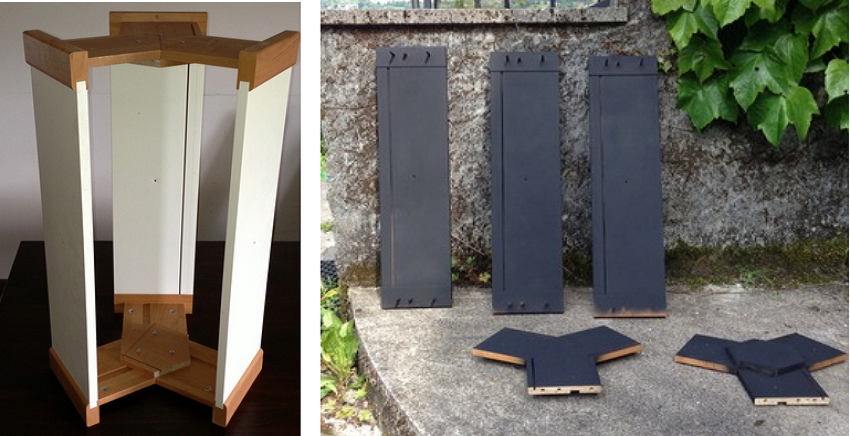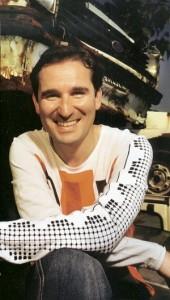Salvatore ‘Turi’ Cacciatore is the former head of design research at the Fiat Concept Lab and now a freelance designer, and he’s also become enamored with 3D printers and printing. Not being one to let perfectly good materials go to waste, Cacciatore decided he had to build his own printer, so he took an IKEA cabinet he found in his basement and used the drawers to make a Rostock delta printer.
“The 3D Printing revolution has started,” Cacciatore writes on his blog. “It will change the way we think, design, manufacture, distribute and use products. Thanks to open-source 3D printer projects shared on-line, it finally became affordable for people to build their own and share knowledge and experiences about it. I couldn’t resist on building my own 3D printer. I had to. So last summer I did and it was one of the biggest satisfactions I had in my entire life. I feel proud of having put together a machine, that is capable of building, with quite a high level of precision, other products or even other machines.”
He began by measuring and cutting the closet parts and joining together with a handful of M4 screws to build the outer structure of his printer. He even used the screws that came with the closet kit in case he wanted to take it all apart down the road.
A couple of cans of matte black paint (for that “dark techno look”) later, and it was time to find the plastic components for his printer. Cacciatore searched eBay until he found a good deal on a complete set of black Rostock plastic parts printed in Spain.
After a series of manual adjustments to the end effector platform – which he says is the most important component of delta 3D printers like the Rostock – he built the diagonal rods for the device using a few carbon fiber arrows he bought at a sporting goods store.
“I didn’t know at the beginning how important was to get the components perfectly assembled, but fortunately I’ve put as much attention and precision as possible in it,” he says. “In the meantime, I had ordered all the other components except for the hot end, the extruder and the heated bed that arrived later on together with the first ABS filament spool. The electronic is a RAMPS 1.4 mounted on a Arduino Mega. I got a complete set of already assembled electronics with end stops and cables. The power supply is a normal computer ATX.”
Cacciatore says that while “things didn’t go well right at the beginning,” following a few adjustments and tweaks, he mounted an ink pen instead of the hot end to test the motors and directional settings and do the basic calibration and, voilà!, a working printer for his makerspace.
He says of the project that he found building his own printer required “a lot of commitment and focus,” but he adds that he was compensated with a great feeling of satisfaction at having done the work himself.
What do you think of Turi Cacciactore’s Rostock delta printer he built using an old IKEA cabinet he found in his basement? Let us know in the IKEA 3D Printer forum thread on 3DPB.com. Check out the video below of his 3D printer in action.

